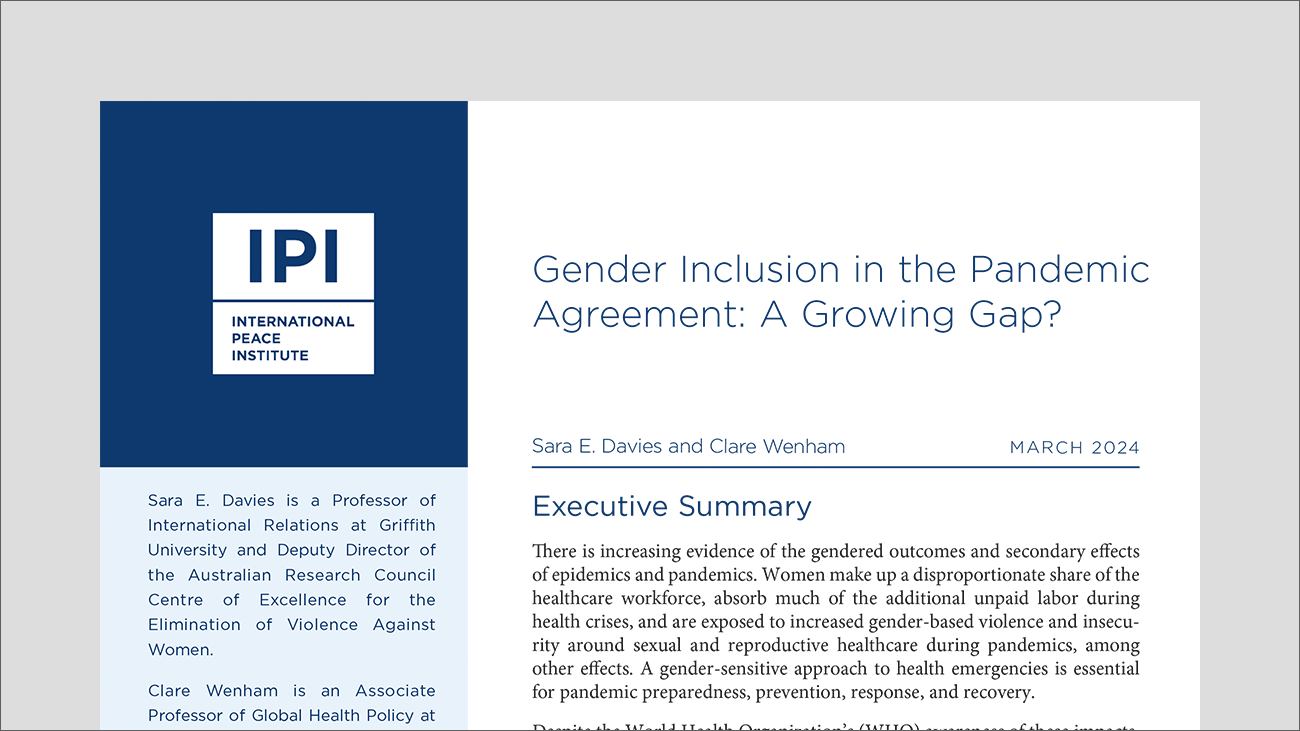
There is increasing evidence of the gendered outcomes and secondary effects of epidemics and pandemics. Women make up a disproportionate share of the healthcare workforce, absorb much of the additional unpaid labor during health crises, and are exposed to increased gender-based violence and insecurity around sexual and reproductive healthcare during pandemics, among other effects. A gender-sensitive approach to health emergencies is essential for pandemic preparedness, prevention, response, and recovery.
Despite the World Health Organization’s (WHO) awareness of these impacts, it does not systematically consider them in its pandemic preparedness and response. WHO’s historical “add women and stir” approach is evident in the proposed amendments to the International Health Regulations (IHR), whose attention to gender focuses primarily on committee representation. Gender sensitivity is also limited in the drafts of the WHO Convention, Agreement or Other International Instrument on Pandemic Prevention, Preparedness and Response (CA+), currently in development. Gender-inclusive language in the CA+ is essential for effective international coordination to prepare, prevent, respond to, and recover from health emergencies.
This paper examines the extent to which gender has been included in the zero-draft CA+ process through a desk review of the drafts that have been published (as of March 2024), focusing on explicit mentions of gender and women. The report documents the progress to date on integrating gender equality into the CA+ and offers the following recommendations for CA+ negotiators, WHO, and member states.
- Future drafts of the CA+ should have provisions that address a wider range of the gendered impacts of pandemics;
- WHO should develop an IHR/CA+ repository;
- INB negotiators should directly engage relevant UN entities to recommend methods of integrating gender into the CA+;
- States that claim to have a principled stance on gender equity should transparently champion gender-inclusive language; and
- The CA+ should consider and incorporate initial lessons learned from the implementation of the gender-inclusive language in the IHR’s Joint External Evaluation (JEE) of states.







